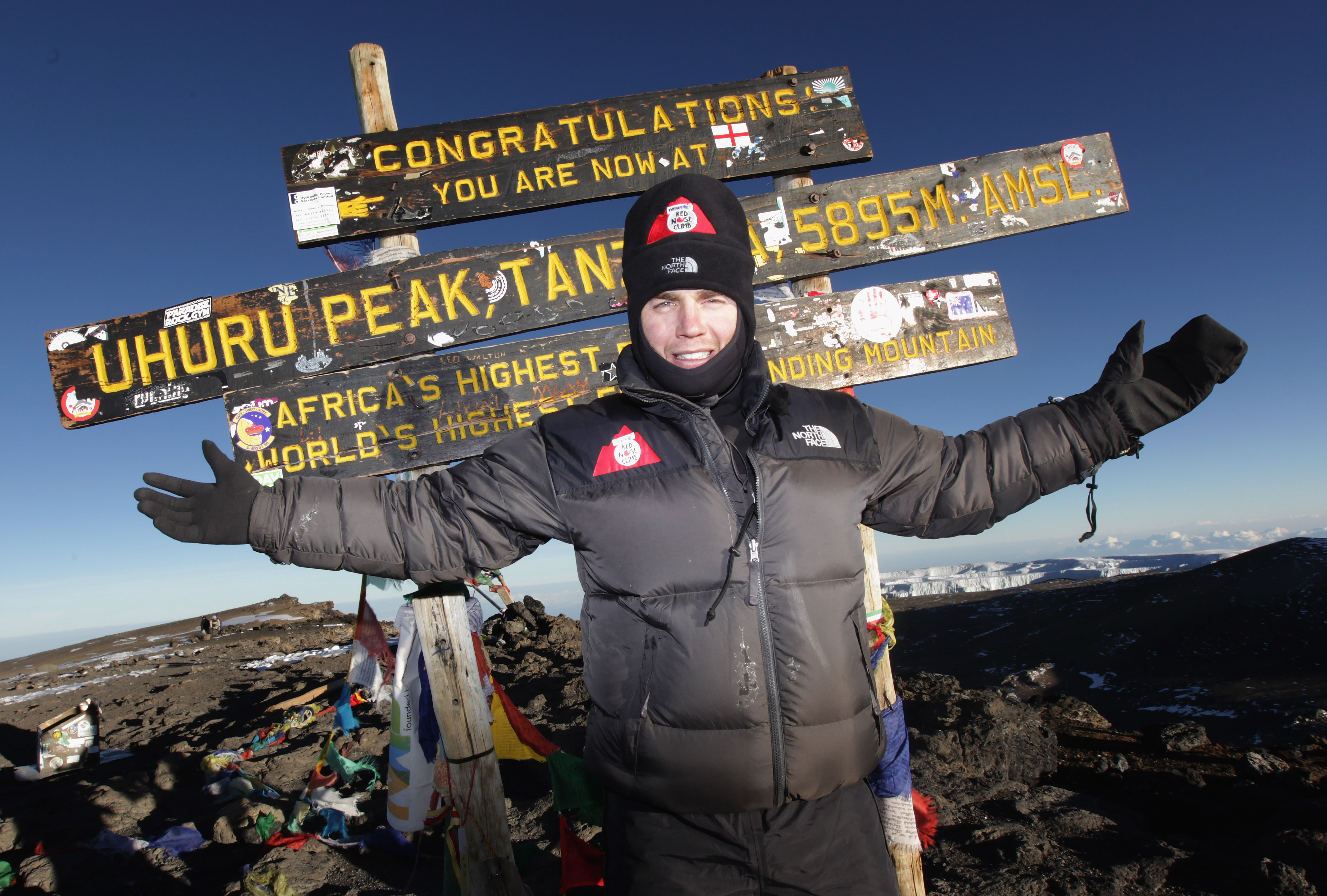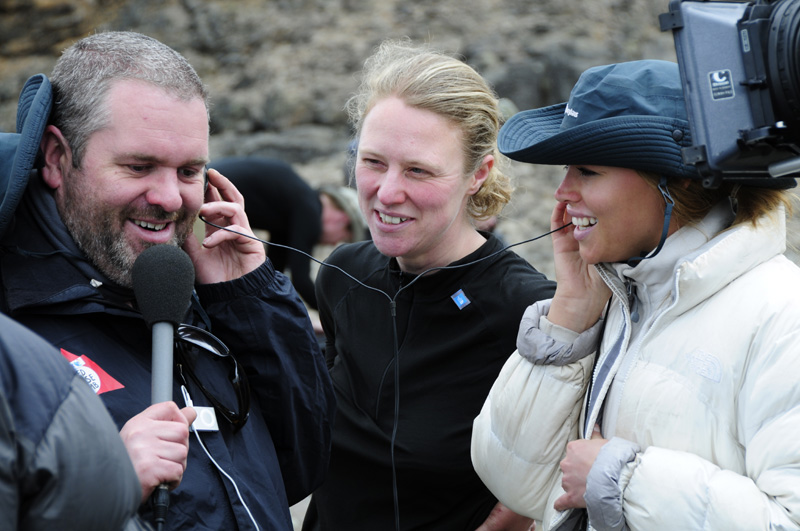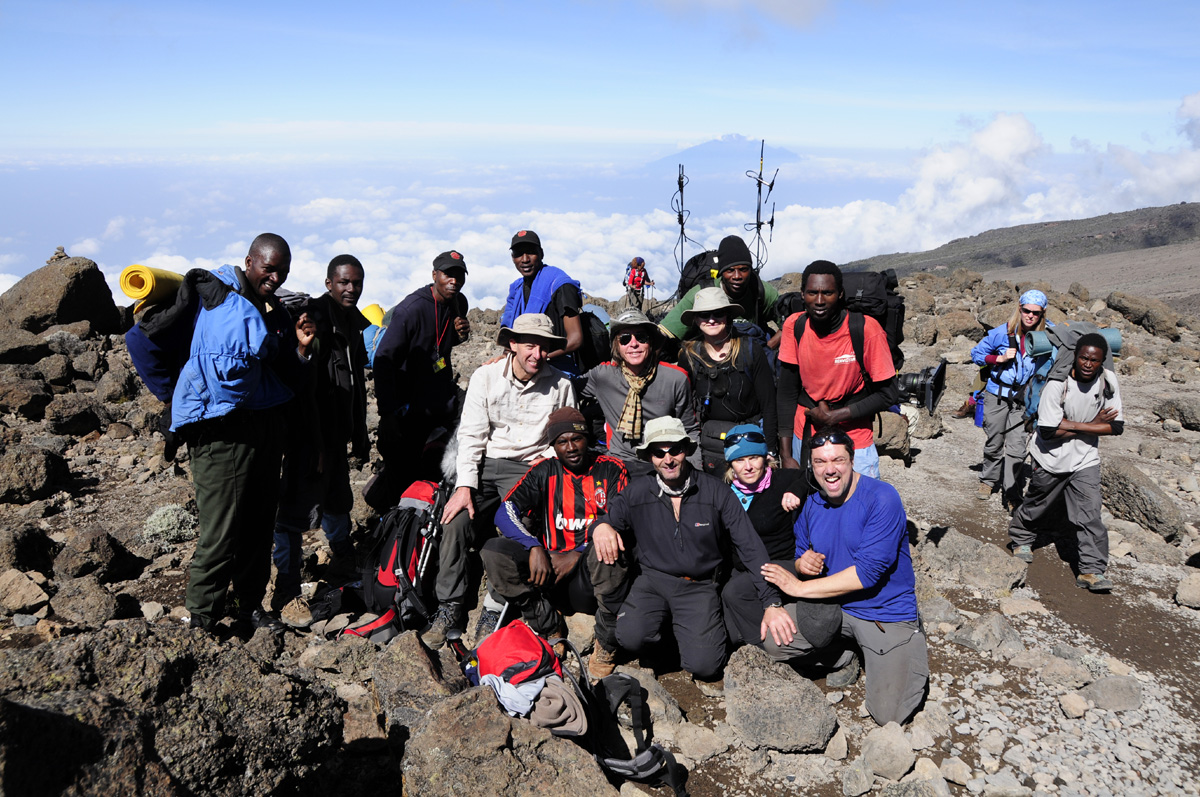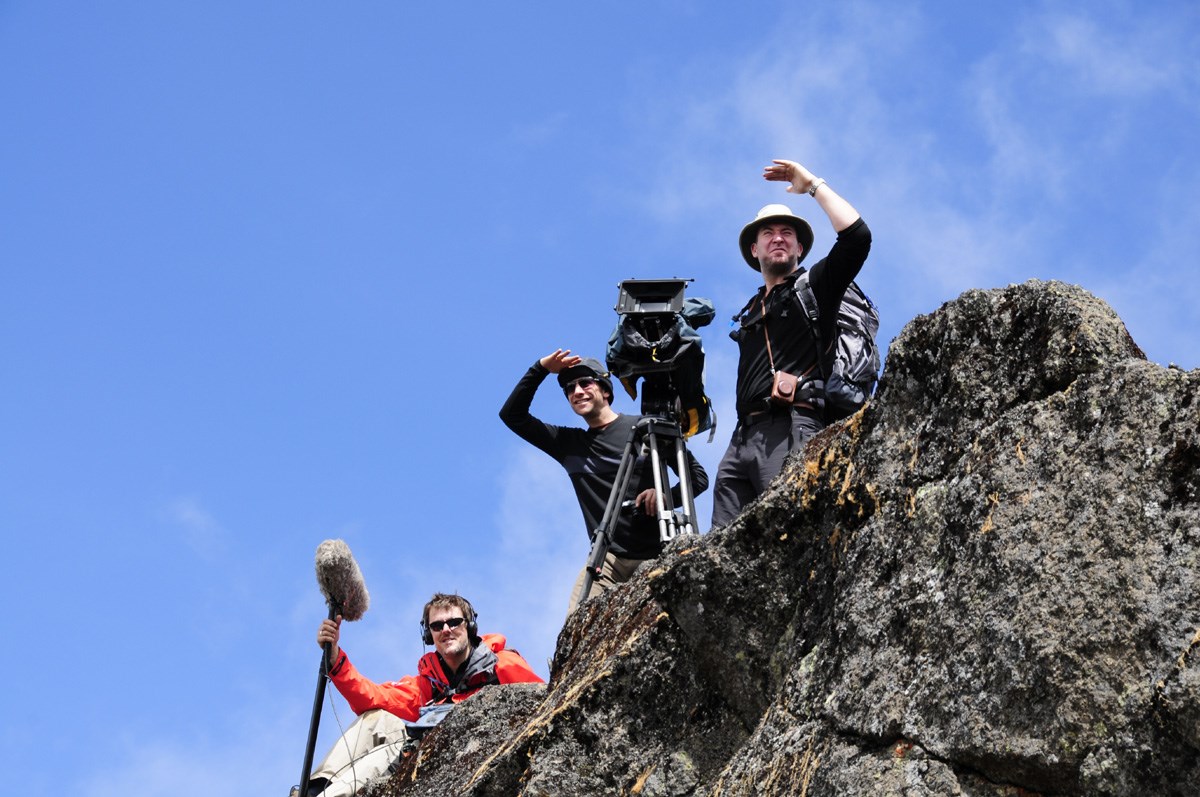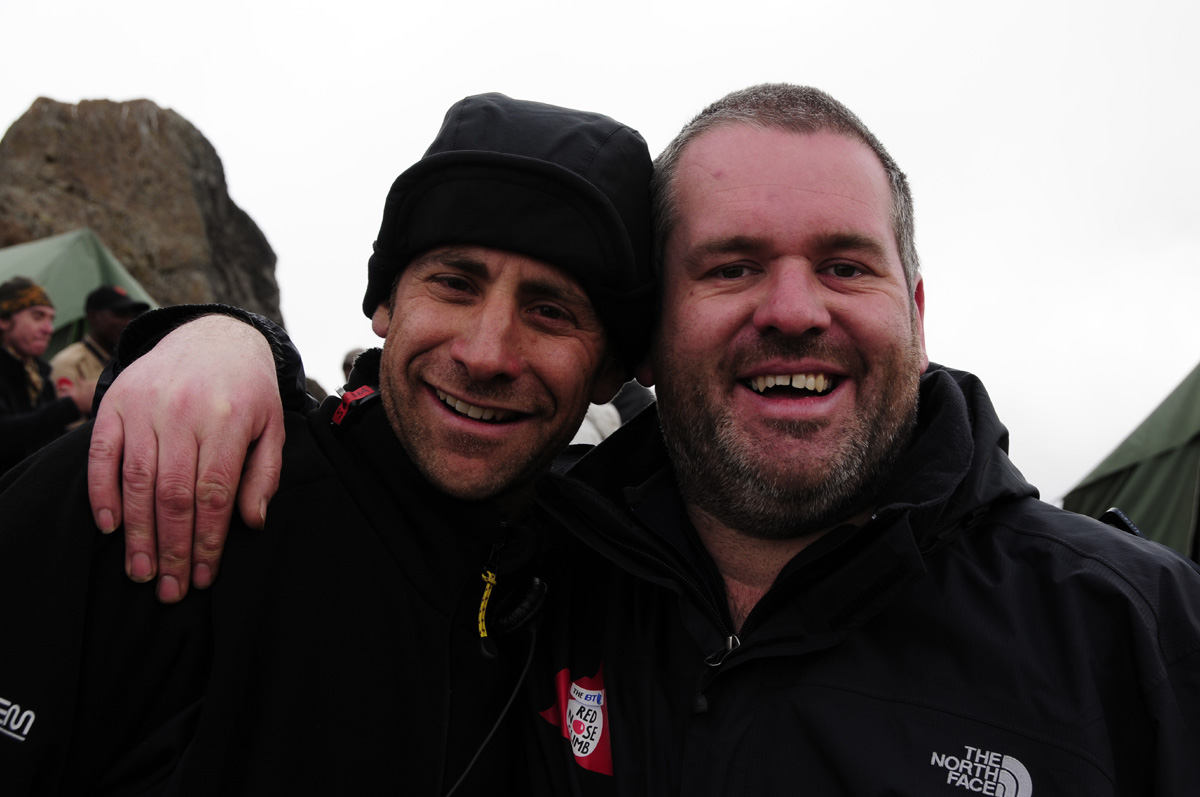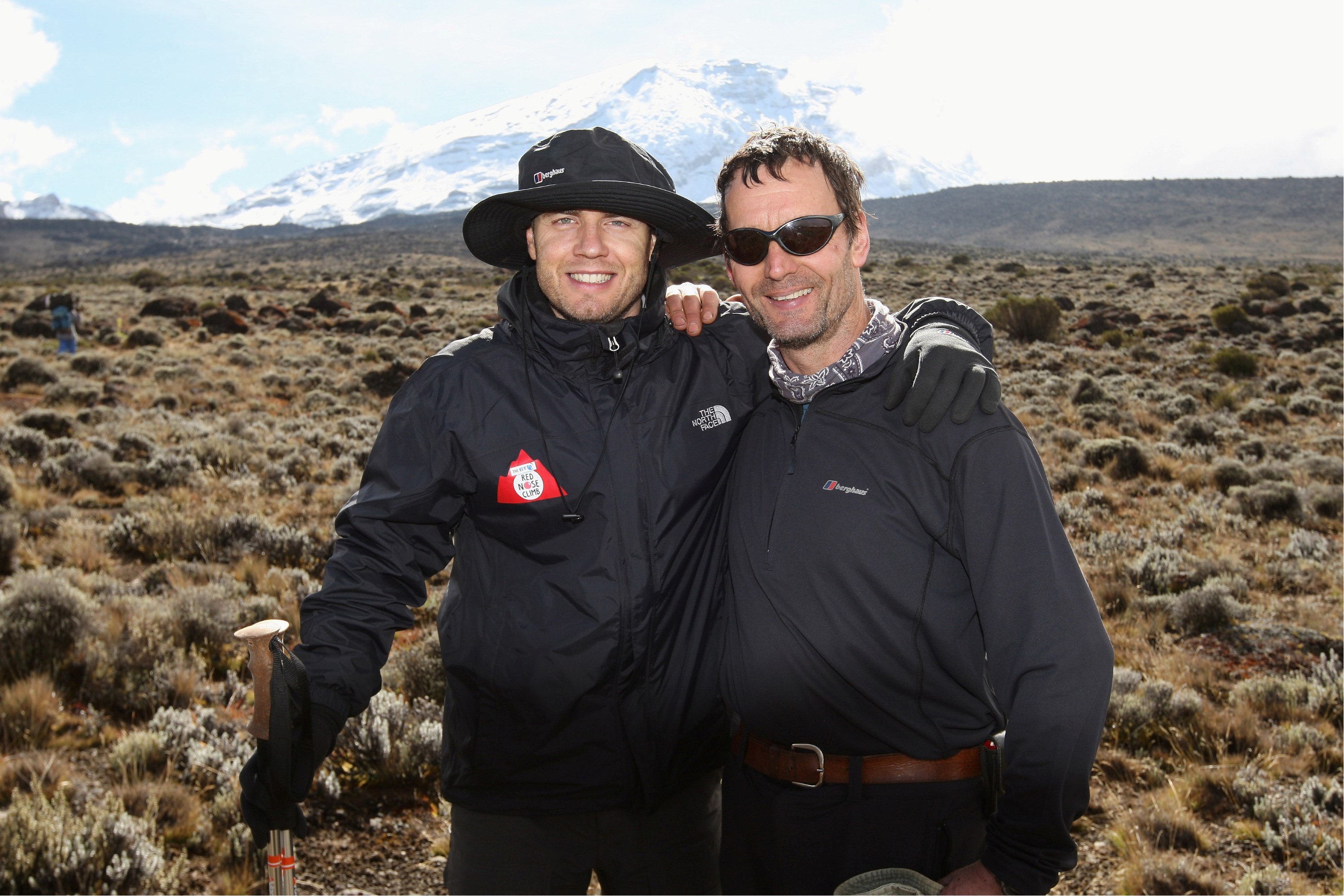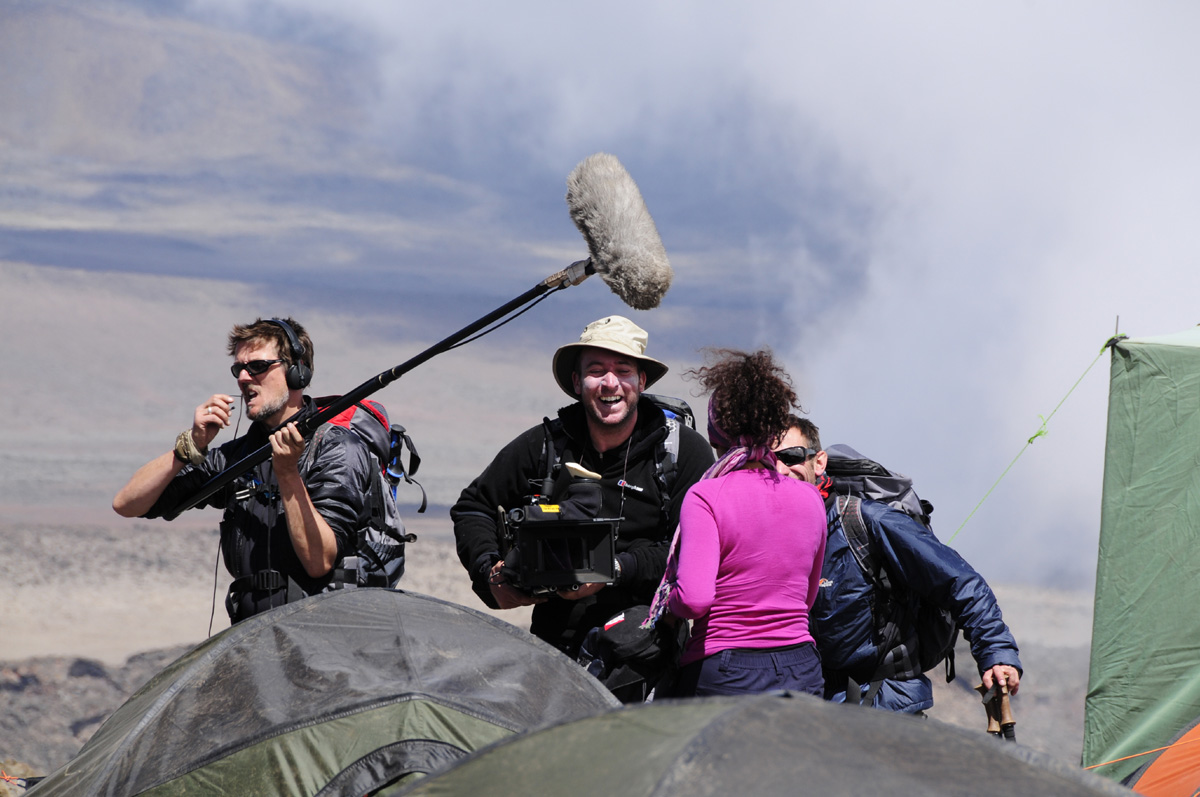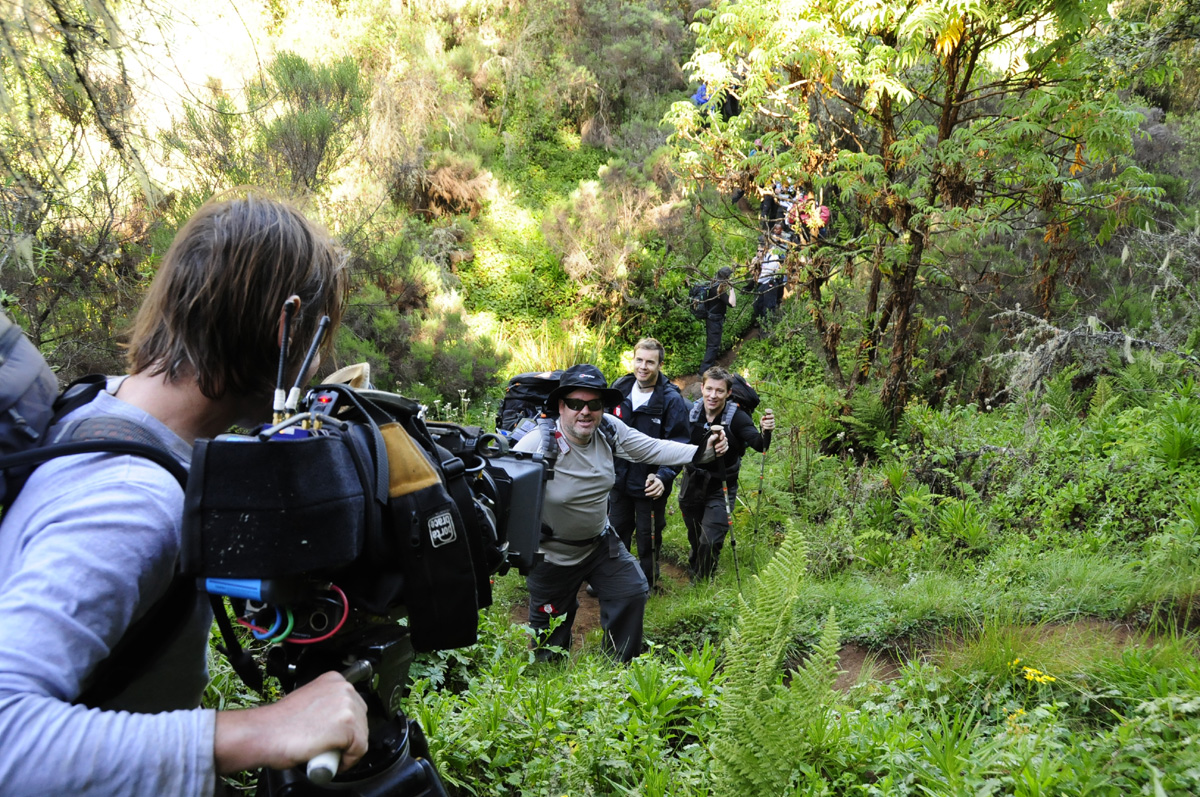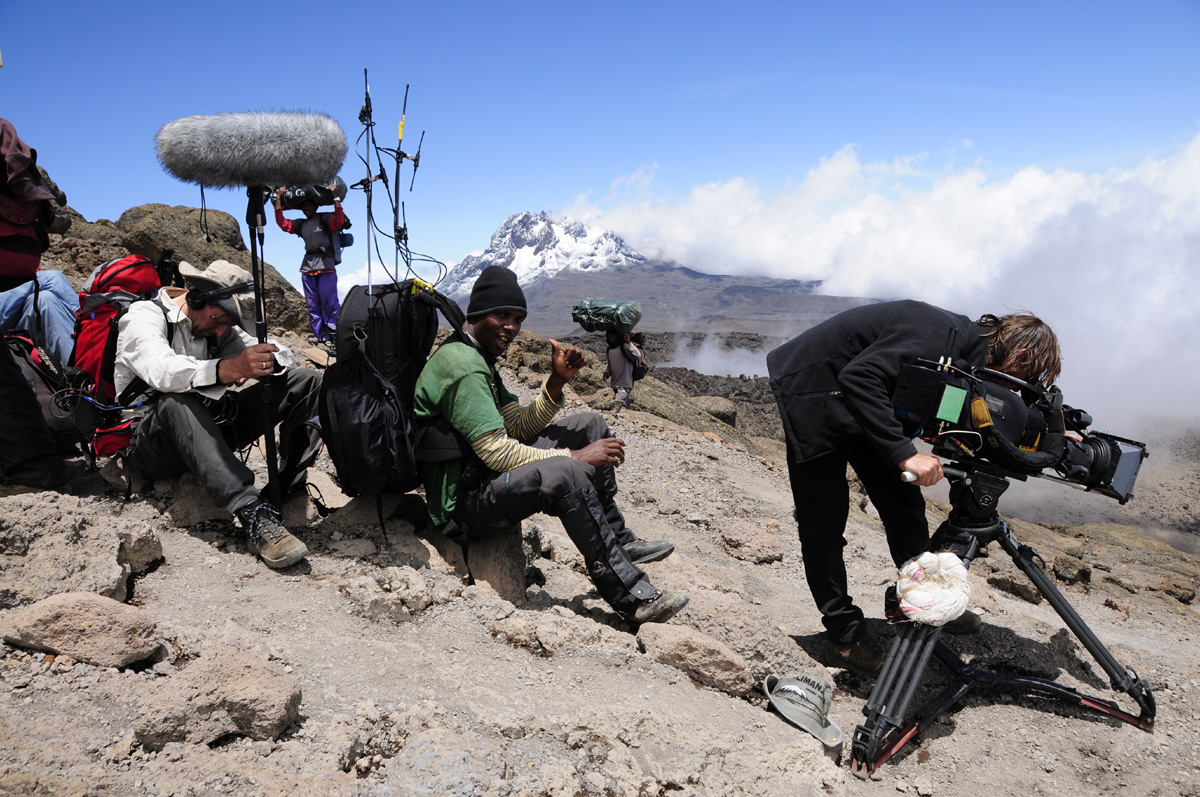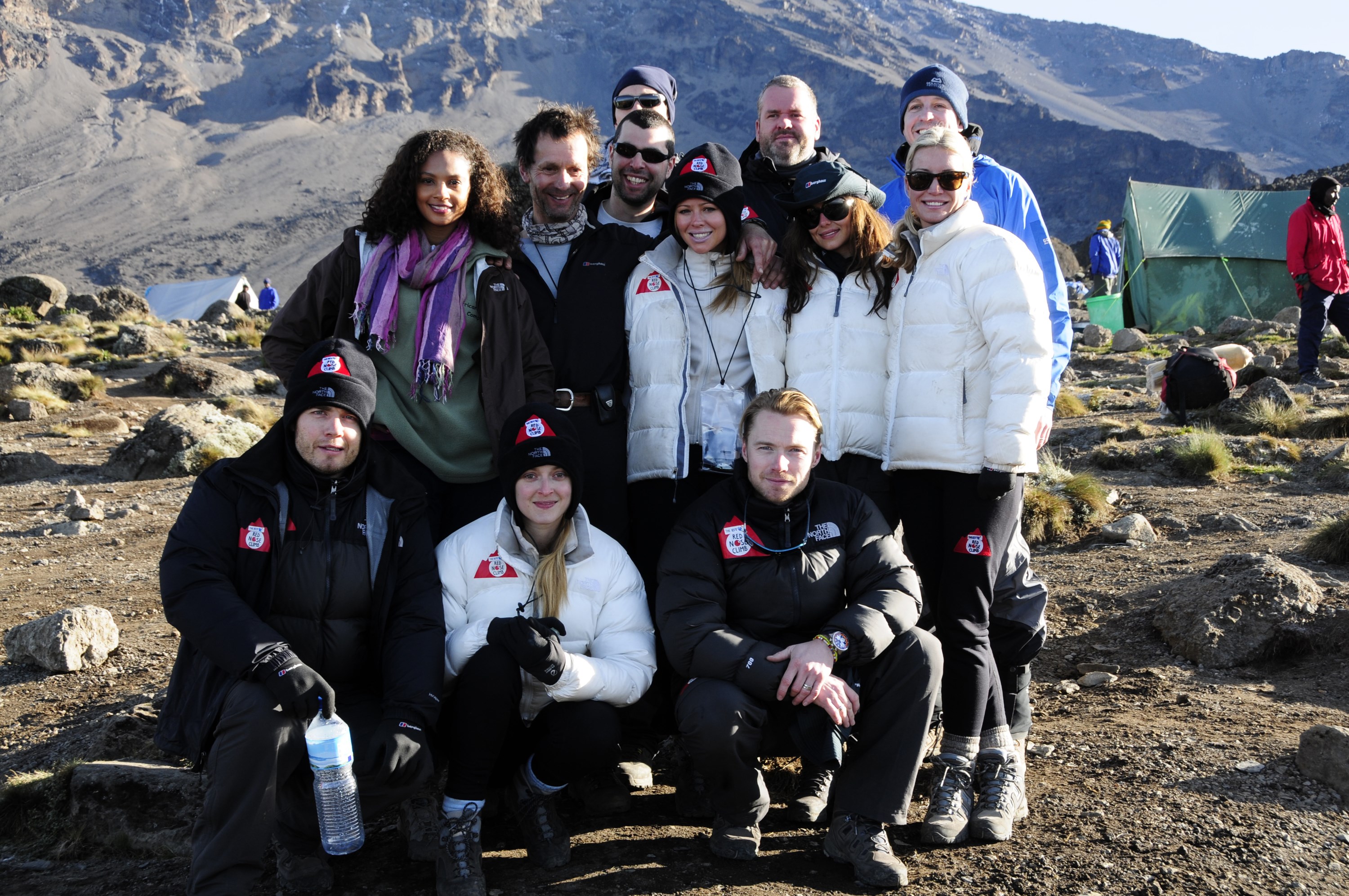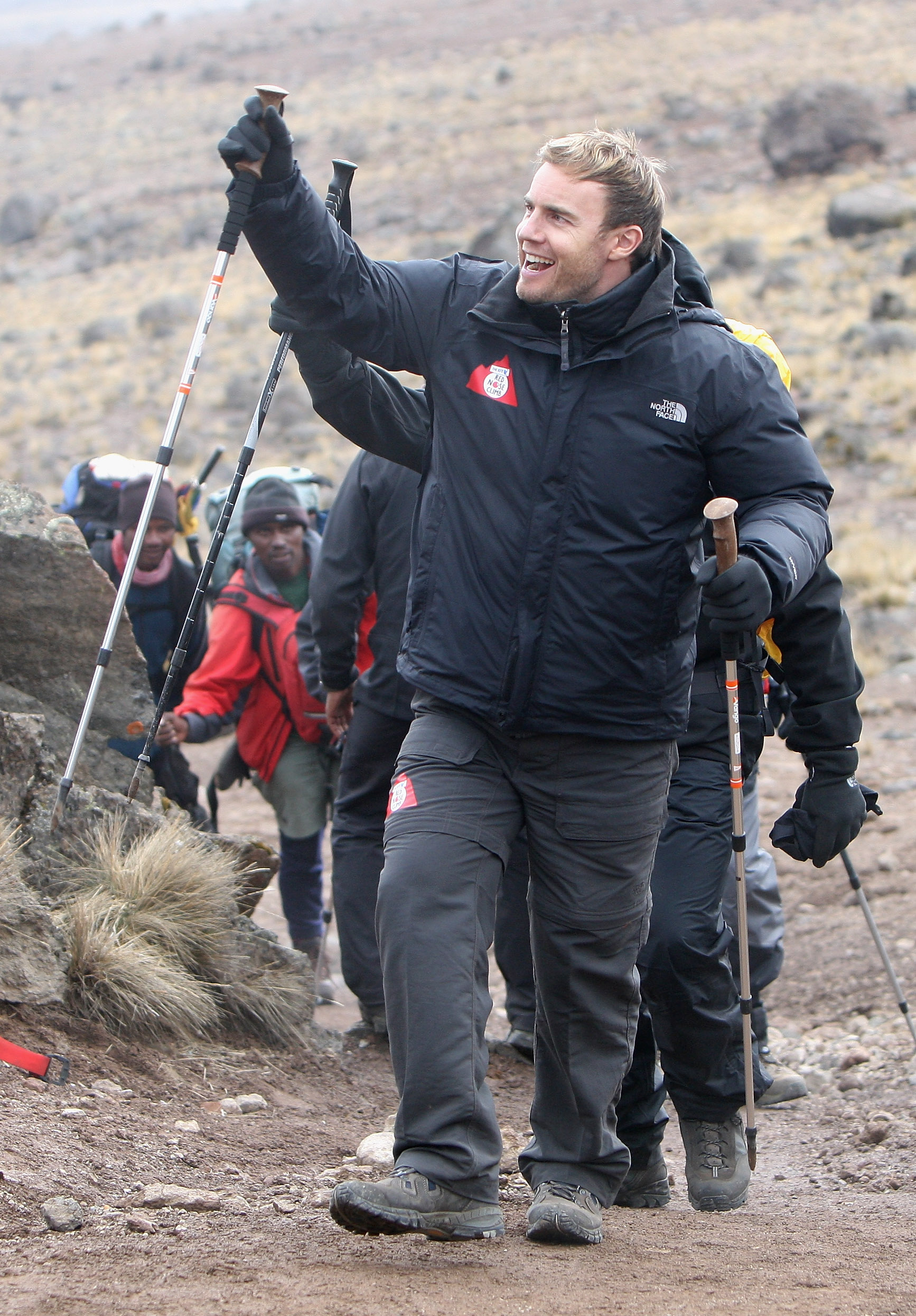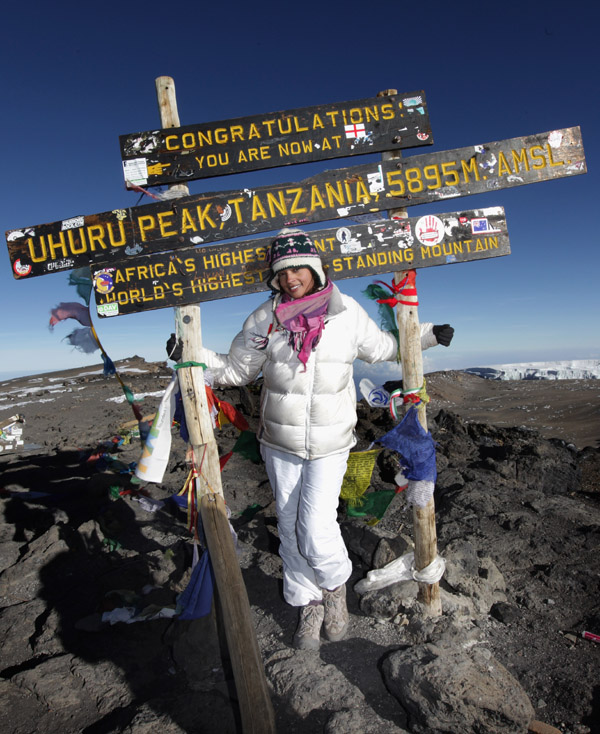In 2009, our staff helped organise the largest ever charity challenge event to Kilimanjaro’s summit, the Comic Relief Red Nose Day climb. The event, which was filmed and broadcast by the BBC and watched by millions, prompted a huge increase in the number of people wanting to climb Kilimanjaro. As you might expect, lots of effort was required behind the scenes in order to make the event work, but it all went off without a hitch! Here’s Jeremy Gane’s account of the experience:
We were first approached by Gary Barlow about staging the BT Red Nose Climb last summer. By December we were working almost seven days a week on planning and preparation for the event.
Despite what the tabloids might have hoped for, there is little gossip to reveal. Expeditions to remote places are great levellers of people and Kilimanjaro proved no exception. The mountain “normalised” the lives of these folk, who usually live on a different plane to us mere mortals. The tough conditions and extreme weather were the same as any other group would experience. Like all Kili climbers, the group had huge hurdles to overcome: altitude sickness, Spartan camping conditions, freezing night-time temperatures and, in some cases, fear of heights. They all invested before the climb in raising their fitness levels, and some of them had a real mountain to climb in this respect before leaving the country. There was lots of camaraderie and the group often laughed and joked about the enormous change to their lifestyles on Kilimanjaro.
What made the expedition such a mammoth project was not the celebrities, but the challenge of transmitting the event to numerous media outlets each day. A full-length BBC documentary was filmed and edited on the mountain, to be aired just three days after returning to the UK, but there were daily updates on the climb on Radio One and online. Behind the scenes, the nine celebs were joined by 25 people from the media, Comic Relief and Charity Challenge, as well as a 140-strong Tanzanian support team. Around 800kgs of media equipment was flown out to Africa and there were two editing suites set up at the base of the mountain. The Tanzanian support team, led by imposing chief guide Emanuel, were completely unfazed by the celebrities who were mostly unknown to them. They established friendly relations with them, just as they would with any group.
We were hugely grateful to our local team, including the great support provided by the African Walking Company. The team managed the logistics amazingly well, enabling everybody to summit and ensured the camp was in place and in order each evening – not an insignificant achievement given the numbers involved and the massive amount of equipment. All the media and climbing gear was transported safely up and down the mountain and each media team (six in all) had their own dedicated porters and guides. There are few other mountains I’ve worked on, in Africa or in the Himalayas, where a project of this scale could be pulled off without a hitch, as it was on Kilimanjaro – a real testament to the efficiency of the ground team.
Comic Relief set a goal of providing an anti-malaria net to every child under five in Tanzania, and the climb went a long way towards achieving that as it raised a very, very impressive £3.35 million.
- Gary Barlow reaches the top of Mount Kilimanjaro on the seventh day of the Red Nose Climb of Kilimanjaro – March 7, 2009.
- Chris Moyles, Cheryl Cole and Rachel on-air
- The BBC camera crew enjoy a group photo with the climb team (2009 Comic Relief Kilimanjaro Climb).
- Sacha, Rohan and Andy, of the BBC Comic Relief film team, pose for the camera. (Comic Relief Kilimanjaro Climb)
- Sacha, the documentary director, with Chris Moyles – BBC Comic Relief 2009 Kilimanjaro Climb
- Gary Barlow and Jeremy Gane (Gane & Marshall, Charity Challenge) on Shira Plateau
- Alesha Dixon with film crew – BBC Comic Relief 2009 Kilimanjaro Climb
- Chris Moyles during rainforest approach
- BBC film crew at work – BBC Comic Relief 2009 Kilimanjaro Climb
- Celebrities Ronan Keating, Gary Barlow, Chris Moyles, Alesha Dixon, Chris Moyles, Fearne Cotton, Denise Van Outen, Kimberley Walsh, Cheryl Cole and Ben Shepard are climbing the 19,000ft high mountain for Comic Relief.
- Ronan Keating – BBC Comic Relief 2009 Kilimanjaro Climb
- Alesha Dixon on the summit of Kilimanjaro
You can watch the full 1 hour BBC documentary on youtube:
